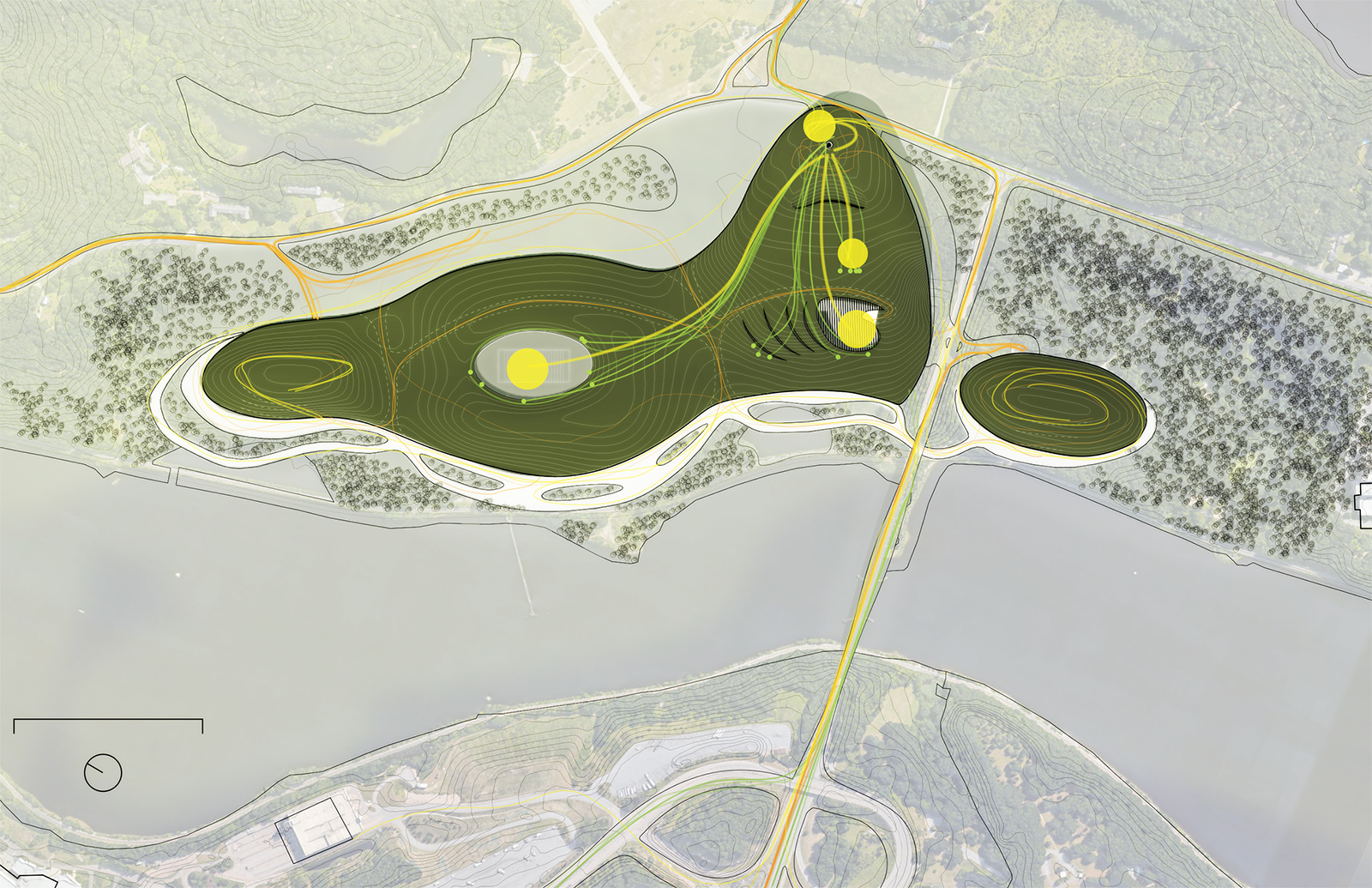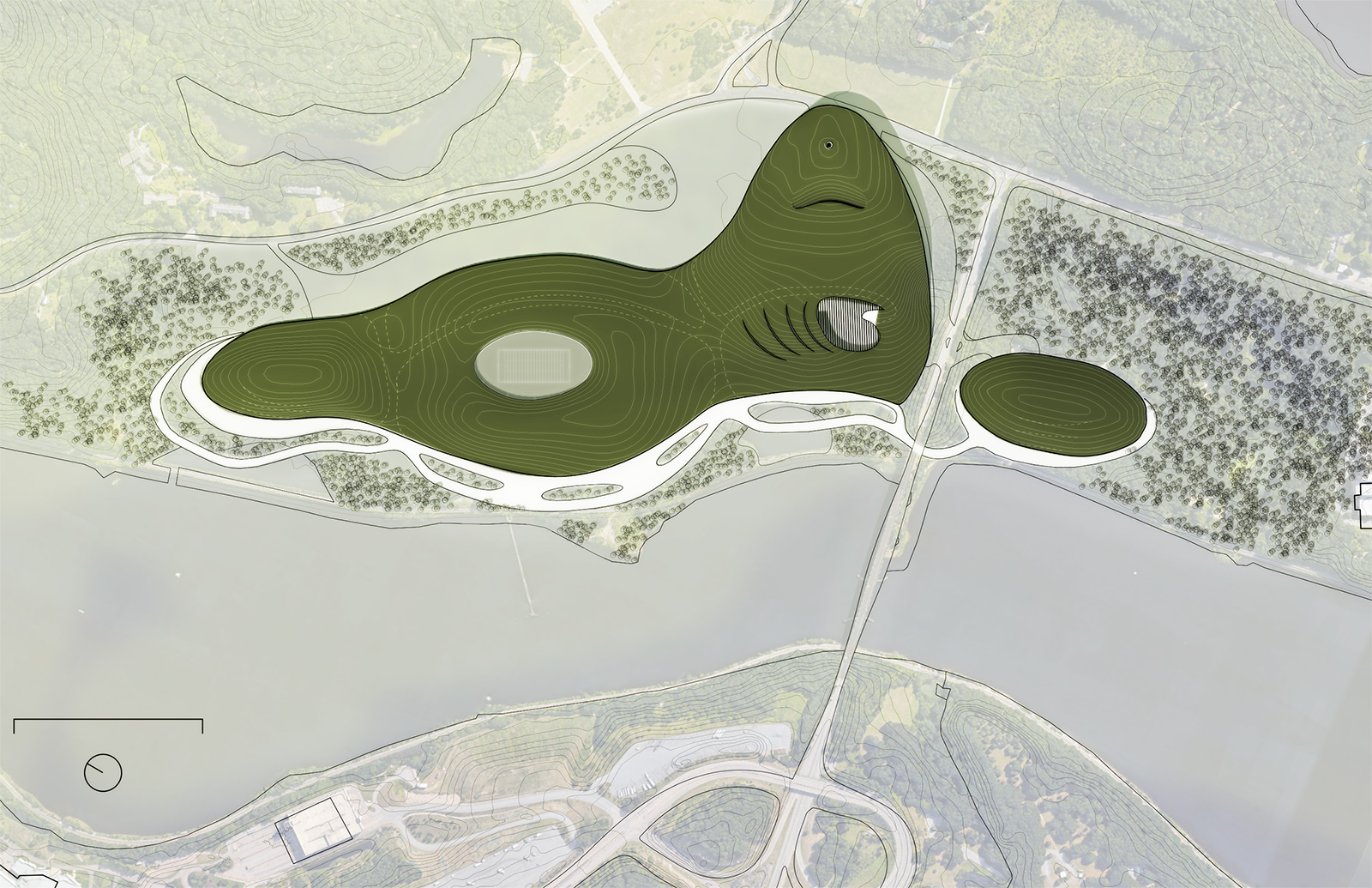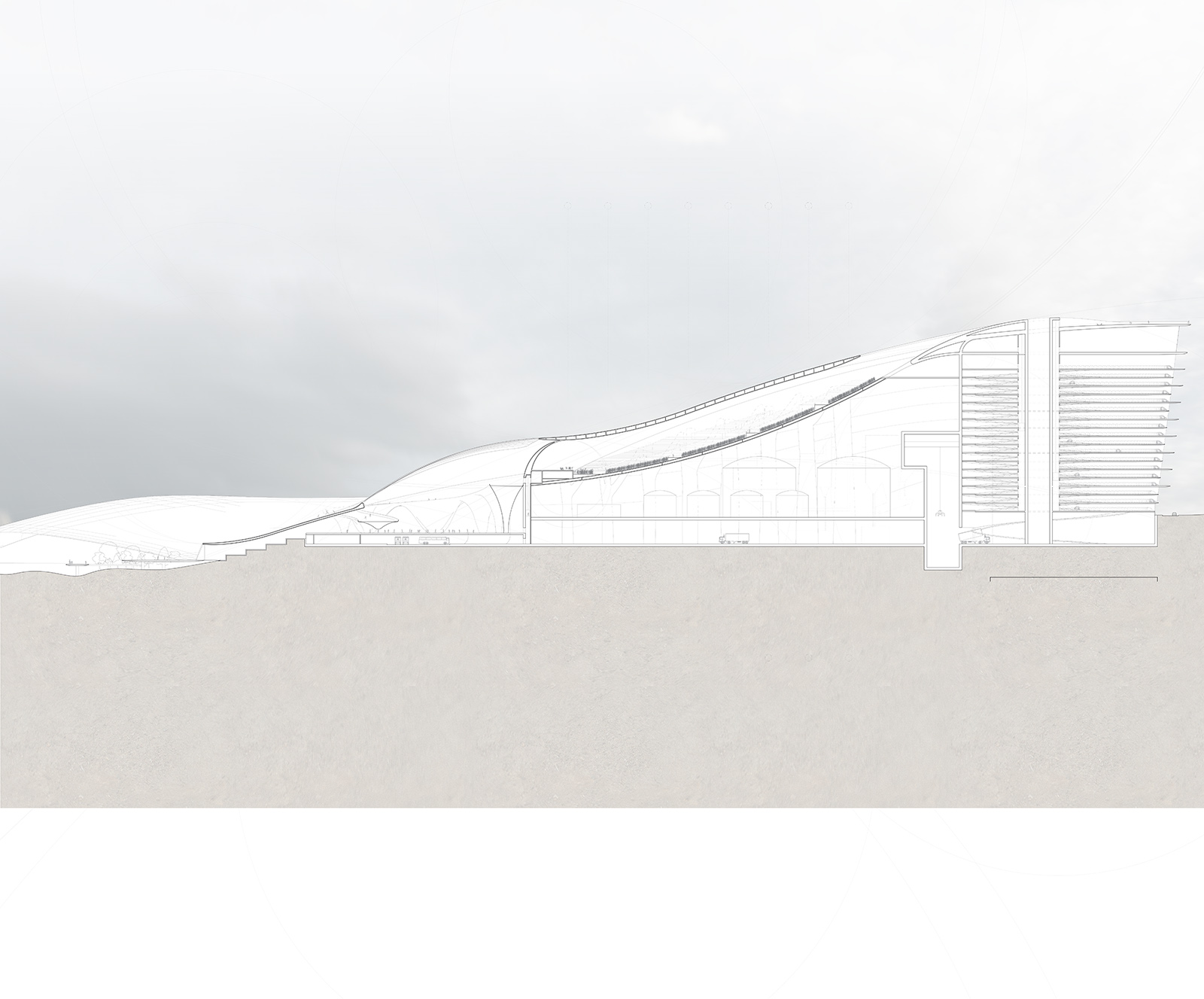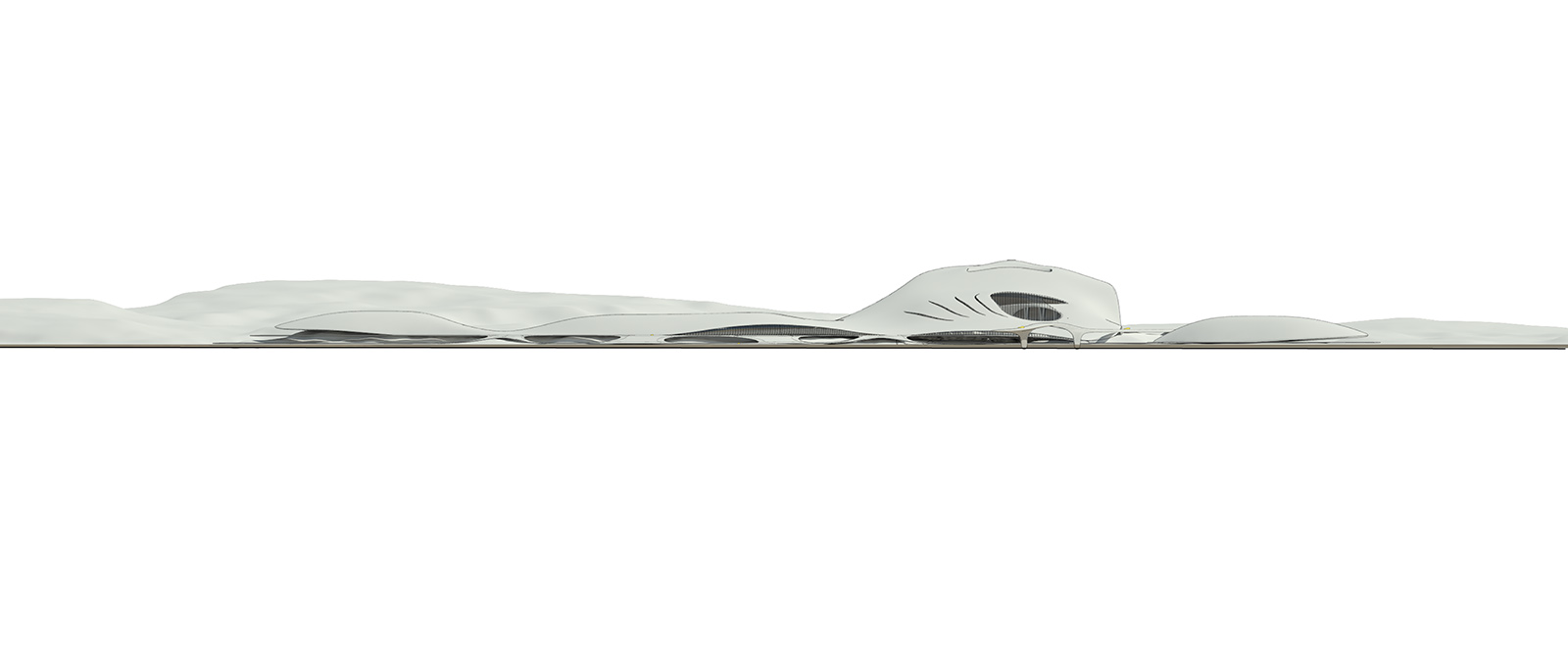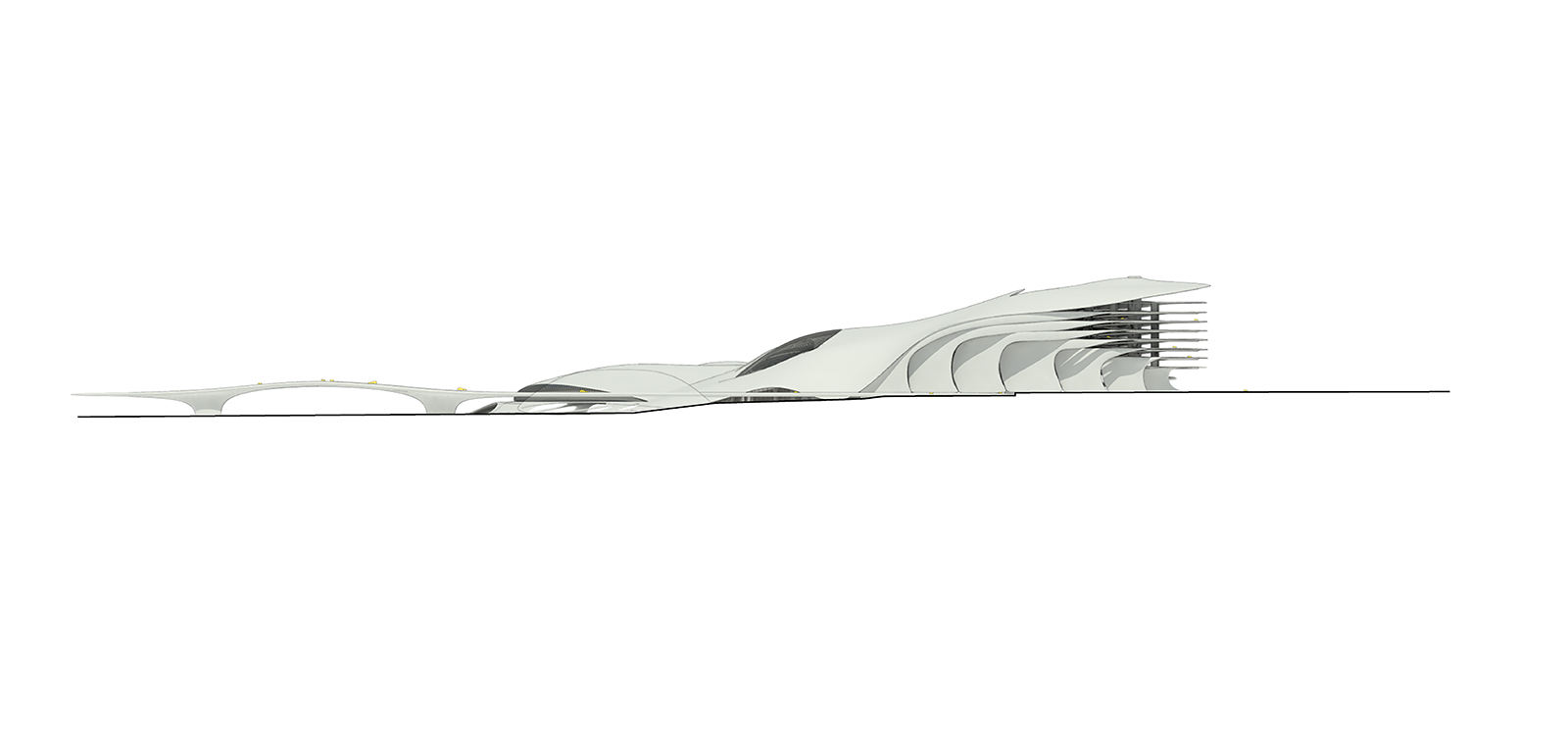Show/Flow
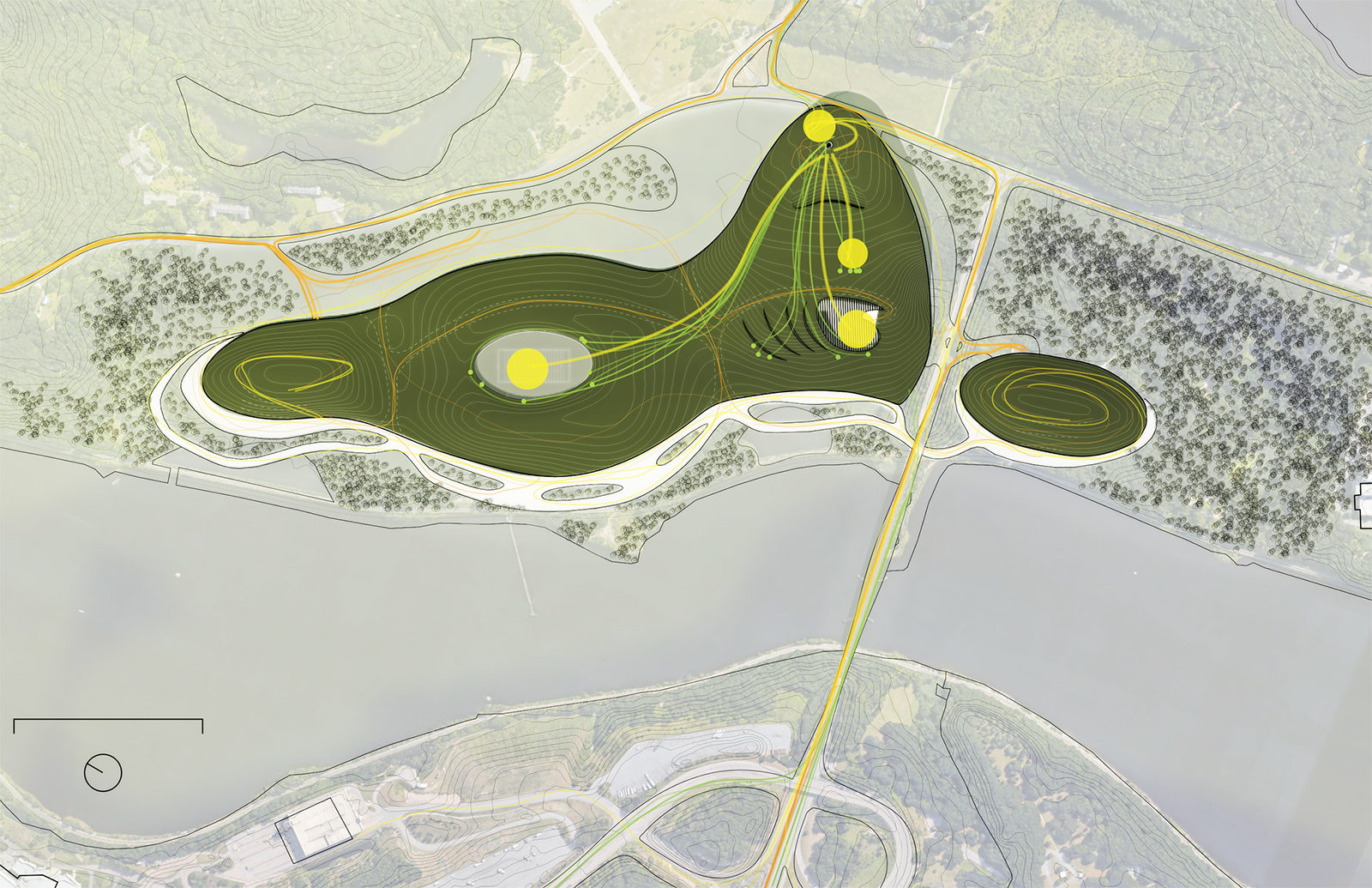
by Andrew Keating (MArch ’17 ) and Scott Smith (MArch ’17 )
This project hybridizes an assortment of large public program into an iconic, regional-scale entertainment, leisure, and transportation complex supported by and supporting a waste-to-energy facility. The program—a regional transit hub for buses and electric vehicles, a sports stadium, an amphitheater for music performance, and a riverwalk—grows from the relatively open, semi-rural site, which currently hosts the Southeastern Connecticut Regional Recovery facility. The plant sits on the riverfront between the two largest casinos in the United States—Foxwoods, several miles to the east, and Mohegan Sun just across the Thames River to the west. This intensity of entertainment space and lack of urban density near the site motivated a search for large-scale program that would capitalize on the draw of the casinos, bringing visitors (and their attendant waste) to the facility, rather than solely relying on trucking as a waste source. Waste travels from the stadium and other facilities to the bunker hall via a vacuum system, so on site collection does not require additional trucking.
The building gathers the stadium, amphitheater, waste-to-energy plant, transit hub, and two large parking structures under a sinuous shell, which at times rises hundreds of feet above the landscape while at others meeting the ground plane and allowing visitors to walk up onto it. The shell takes part of its form from the spatial requirements of the waste-to-energy process, which, while linear, can be reorganized so that the tallest elements (the bunker hall, incinerator, and stack) all collect to one end. This creates the dramatic slope of The Hub, the central lobe of the greater shell. The tipping hall sinks below ground, accessible via a spiraling ramp that brings tipping traffic down while sending electric vehicles up drop visitors at the sky lobby for music and cultural events in the amphitheater. The amphiteather is suspended directly above the waste processing equipment. Bus traffic proceeds below the western portion of the hub, where visitors ascend into the transit hall, and can proceed up a long, sculptural ramp up through the oculus overhead and out onto the riverwalk. The waste-to-energy facility provides electricity and heating for the activities on site, and also to surrounding communities.
The project proposes a new way of thinking about regional-scale buildings and entertainment facilities, one that uses waste generated on site as an energy source, minimizes the carbon impact of waste removal, and reduces the inevitable loss of energy in transport from power plants to the point of use. Further, the waste-to-energy process supports a new kind of regional transit, relying on small electric vehicles, which may soon be able to drive themselves across the southeastern Connecticut region. The project results from the complexity of processes, not just within the waste-to-energy system, but also inherent to the site–flows of people, capital, vehicles, culture–bringing them all together into a manifold event space of event and flux, performance and circulation: Show and Flow.
